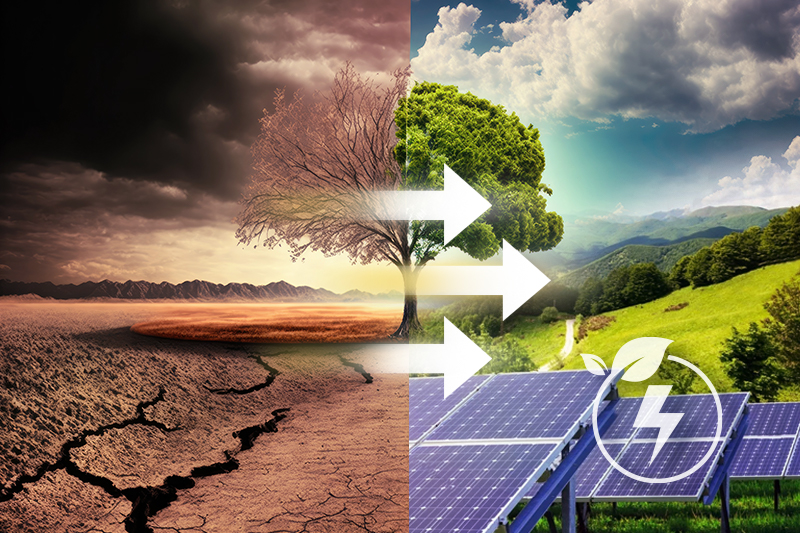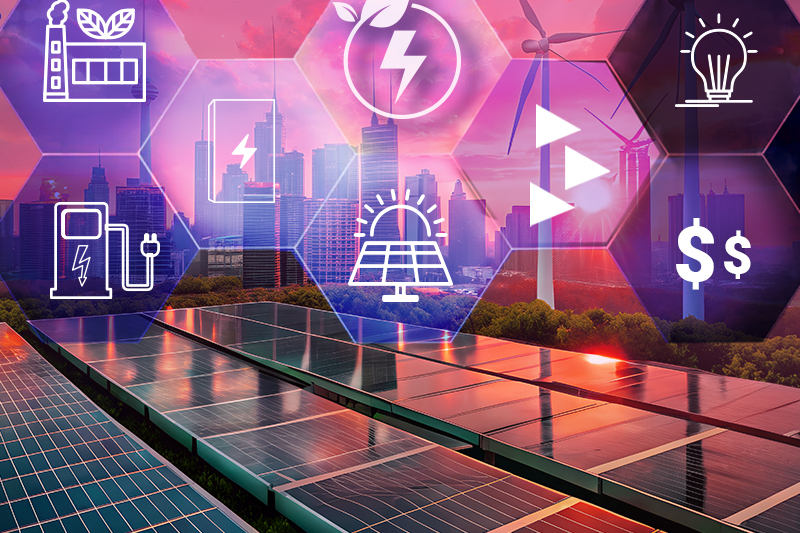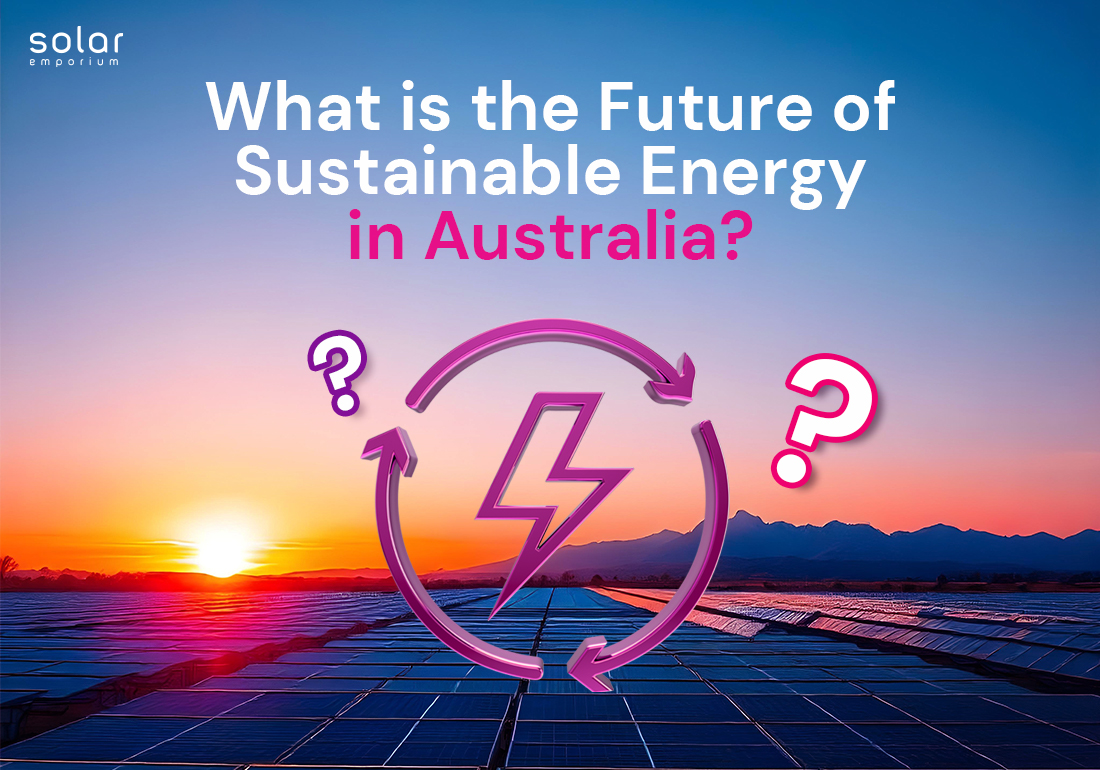It’s a well-known fact that Australia is a nation with rich natural resources, such as vast open spaces, sun-drenched coasts, and an abundance of wind.
However, despite its natural blessings and capability to lead the charge in renewable energy for its unique geographical position, the country still depends heavily on fossil fuels for its energy needs.
Doesn’t it sound disappointing while the whole world is grappling with climate change issues and the greenhouse effect resulting from burning fossil fuels? Certainly, it is!
As Australia faces the urgent need to reduce carbon emissions and embrace cleaner energy sources, the question arises: Can this sunburnt country truly transition to a renewable energy powerhouse? What is the Future of Sustainable Energy in Australia?
Well, the path forward is still uncertain. From technological innovations to political influence and social shifts, everything seems complex and far-fetched.
But with the winds of change blowing across the globe, let’s see how Australia is tackling the challenging road to its sustainable energy future.
So, tag along to learn more details!
Why Switching to Sustainable Energy is Crucial for the Australians?
What is sustainable energy?
Sustainable energy is derived from sources that can fulfill the current energy demands without hampering ecological balance. This energy form can be used repeatedly without putting a source in danger of getting depleted.
Wind, solar, and hydropower are Australia’s most common sustainable energy sources. These natural resources can be also termed renewable energy sources.
So, now the question is why switching has become essential for Australians.
Well, if we look at Australia’s current energy landscape, we will see that a massive part of the country’s energy, nearly 65%, comes from non-renewable sources such as coal, crude oil, or natural gas.
Australia has some of the largest coal mines, with 14.3% of total global coal reserves. It is also known as the largest exporter of liquefied natural gas (LNG) and has one of the most carbon-intensive power grids in the world.
These high dependencies on fossil fuels and the burning of coal release excessive carbon emissions that lead to global warming, one of the main issues related to climate change.
Due to Australia’s abundant renewable sources and cheap and eco-friendly energy features, embracing renewable sources and speeding up sustainable practices could be an effective way to ensure a lively, safe, and healthy planet for future generations.
Besides environmental sustainability, this energy shift also benefits Australia’s economy by promoting energy resilience.
Therefore, sustainable energy transition in Australia has become crucial in building a low-carbon economy, reducing pollution, and slowing climate change.

Australia’s Energy Transformation: 3 Sustainable Sources Leading the Way
By replacing fossil fuels like coal, oil, and gas with sustainable energy sources like solar, wind, or hydro, we can generate clean energy. This reliable energy source powers our homes, businesses, and transportation sector without harming the environment.
We know that switching to renewable sources is a crucial step in reducing the carbon emissions that are driving global warming; let’s look at the variety of renewable energy sources that can contribute to a sustainable energy future.
So, here are the main types of sustainable energy sources in Australia!
Tapping into Solar: Why Australia is Poised for Solar Energy Success?
In Australia, solar power is considered one of the most widely used, abundant, sustainable energy sources. With over 3 million rooftop solar panels installed, the country has gained a strong foothold as a global leader in solar energy adoption.
In order to reduce carbon footprint and cut energy costs, this solar energy trend is expected to escalate further within the next few years.
The Australian government and solar utility companies are taking significant measures to utilize this natural blessing, particularly in regions with abundant sunlight, such as Queensland and New South Wales.
By decreasing the cost of solar and storage technology, they encourage local communities to use solar energy more intensively, reducing dependency on fossil fuels.
Overall, these large-scale solar farms and community solar projects, integrated with energy storage systems such as batteries, are helping to make Australia’s grid more sustainable and efficient.
Wind Energy: A Powerhouse of Potential
Wind energy is another major player in Australia’s renewable energy mix. The country’s southern coastline has vast areas with consistent and high wind potential, which makes it suitable for electricity generation.
Alongside solar, Australia’s wind energy capacity has also surpassed 5,000 megawatts in electricity generation.
Still today, the sector continues to expand, with new wind farms sprouting in Victoria, South Australia, Tasmania, and many other Australian states. The rise of offshore wind farms and wind projects significantly fulfills global climate goals.
Wind energy sources produce clean energy, ensuring the country’s commitment to renewable energy targets, such as reducing carbon emissions by 43% by 2030 and achieving net-zero emissions by 2050.
They offer a promising future by delivering significant amounts of power to the grid and creating thousands of new jobs.
Hydro Energy: Harnessing the Power of Water
Hydropower or hydroelectric power uses the flow of water to generate electricity. While Australia has some large hydroelectric plants, the largest share of the nation’s hydroelectric power comes from Tasmania.
In 2024, the electricity generation in the Hydropower market is projected to amount to 16.36bn kWh with an expected annual growth rate of 2.03%
Though hydro energy’s potential for growth is more limited than that of solar and wind, it still plays a pivotal role in Australia’s renewable energy transition.

Green Hydrogen: Another Game-Changer for Australia’s Sustainable Energy Future
Another exciting development for Australia’s sustainable energy future is the country’s growing interest in green hydrogen.
Wondering what’s green hydrogen? Let’s figure it out!
Green hydrogen is usually a clean energy source produced by the electrolysis of water. This process is fully powered by renewable energy that splits the hydrogen and oxygen molecules.
The process doesn’t create harmful emissions like burning fossil fuels, and the separated green hydrogen can be utilized as a clean energy source for various industries, such as transport, manufacturing, and even electricity generation.
With its vast renewable energy resources and strong expertise in hydrogen technology Australia is geographically well-positioned to become a global leader in green hydrogen production.
Before that, in October 2023, the Australian Government announced that it would invest 2.64 billion USD in the Hydrogen Headstart program.
In the 2024-25 federal budget, the government again announced an additional $2 billion for hydrogen headstart to accelerate the development of Australia’s hydrogen industry.
The program usually provided revenue support for large-scale renewable hydrogen projects, encouraging people to generate clean energy.
In addition to fulfilling domestic energy demands, Australia can also export green hydrogen to global markets. This strengthens the Australian economy during the rising global demand for clean energy solutions and contributes more to the future of sustainable energy.
Government Policy Shaping the Future of Sustainable Energy in Australia
Over the past decade, there has been a growing awareness in Australia about moving from coal to solar or other sustainable energy sources.
However, the energy transition is not a walk in the park; it’s more like steering a massive ship through stormy seas. The transformation journey requires careful navigation, significant investment, and overcoming many obstacles.
The road ahead may be long, whether it’s upgrading infrastructure or addressing technical challenges. However, with the right government policy and support, Australia has the full potential to lead the global energy market.
For example, by generating over half of its electricity from renewable sources, South Australia has already achieved a significant milestone
Moreover, in other states, such as Queensland and New South Wales NSW, the government is offering incentives for solar battery installation to make it accessible to all.
Australia is setting ambitious renewable energy targets for 2030, backed by policies to boost clean energy industries. The goal is to achieve net zero emissions by 2050, supporting the future of sustainable energy in Australia.
So ultimately, the future of sustainable energy in Australia depends largely on how quickly and effectively the federal government can adopt a vision of a renewable energy future in Australia.
Navigate the Challenges in the Sustainable Energy Transition
Several key challenges need to be addressed and achieved initially when considering the future of sustainable energy in Australia.
So, here are the critical challenges that hamper the future of sustainable energy in Australia:
Grid Modernization
Grid upgrade or renewal is one of the first and foremost issues for Australians. Most existing power plants and grids were built based on centralized fossil fuel power stations.
However, those grids cannot handle the new decentralized, variable nature of renewables like solar and wind.
Integrating solar batteries with the smart grid and ensuring energy equity remain other challenges, as they require substantial investment, high upfront cost, and technological support.
On a positive note, the Australian Energy Market Operator, AEMO, has already started implementing changes to make the grid more flexible and resilient, but this process will need to accelerate in the coming years for a sustainable energy future.
Lack of Transmission Infrastructure
Sustainable energy projects like large solar or wind farms are usually built in suburban or coastal areas for high production. The energy produced from such projects needs long transmission lines and proper infrastructure to be transferred long distances.
It has been identified that Australia needs more than 10,000 km of transmission lines by 2050.
This upgradation and development are crucial for improving efficiency and grid connection processes, which ultimately power cities, urban homes, and industries with renewable energy sources.
Policy Inconsistency & Complex Regulatory Planning
In Australia, the government offers various incentives and rebates for sustainable energy transition. However, these policies sometimes fluctuate without prior notice and require a lengthy approval process.
This creates a trust issue for consumers and often puts them in a dilemma when investing in renewable energy sources.
Energy Storage: The Missing Link
Have you ever thought what’s the most significant challenge for sustainable energy sources? It’s the intermittency.
For example, solar energy can only be produced during the day, and wind energy can vary depending on weather conditions. This variability can make it challenging to maintain a stable energy grid.
However, technological advances in battery storage are beginning to solve this issue. Robust, efficient battery brands like Tesla Powerwall 3, Sunglow, and Alpha ESS have emerged as promising solutions for sustainable lifestyles.
Moreover, large-scale energy storage systems, such as the Hornsdale Power Reserve in South Australia, are already demonstrating the potential of battery storage to stabilize the grid and provide backup power during peak demand periods.

What’s Ahead for Renewable and Sustainable Power in Australia?
Australia is well known for having one of the highest potentials for renewables in the world. With the abundant sun, vast open landscapes, and expanded coastal regions, the future of sustainable energy is undeniably exciting.
From solar farms to wind turbines, from green hydrogen to innovative storage solutions, the country has all the ingredients to build a low-carbon economy that benefits both the environment and the economy.
However, to power the future under Australia’s renewable energy target requires continued investment, policy support, and technological innovations.
Besides, governments, businesses, and communities can harness renewable energy and create a more sustainable future by working collaboratively.
So, that’s how Australia’s energy system could become a shining example of nations transitioning from fossil fuels to a renewable-powered economy.
For more information, contact Solar Emporium. You can also check out our solar energy products and win a free solar quote today!







